#CamundaCon 2019
Last week I had my first CamundaCon experience with more than 600 attendees. CamundaCon is the company's conference that happens every year, it is all about BPM, the partners, customers and the community of the Open Source projects that the company has created. It is an important place to be if you are looking to get some insights about the projects roadmap, the products roadmap and what is happening in the community.
The community is great here, the amount of community-driven projects are amazing and the level of engagement is quite spectacular. It is really good to meet the people involved in these projects and learn about why they created them and what are the possible extension points for them.
Among the crowd I found loads of BPM Open Source experts that knew very well the history of Camunda and other related projects, so we shared our vision of where each of these projects is going. In general, I got a really positive vibe about the future of the Company and the future of all their open-source projects.
The big BIG announcement of the conference was the public Beta of Camunda Cloud (SaaS) which basically allows you to run a Zeebe Cluster + Camunda Operate on top of Kubernetes(GKE) and it provides a way for you to connect to the cluster. In this way, you don't need to worry about managing the Zeebe Cluster itself, Camunda Cloud will do it for you. You just need to write your Business Processes and your Workers (Service Tasks implementations). I totally recommend you to give it a try, the Beta access is free but you need to sign up here: https://camunda.com/products/cloud/
It was also good to see how the Camunda BPM community is getting to know Zeebe, providing feedback and asking really deep questions about its internals.
Here are some of my notes and highlights for each day.
Day 1
I had an amazing first day, the conference is divided into three tracks to cover the following angles:
- Developer Focused
- Business Focused
- Industry Focused
The three opening Keynotes were quite good at explaining why the company is heading to the cloud and investing in user collaboration, monitoring, and visualization of business processes.
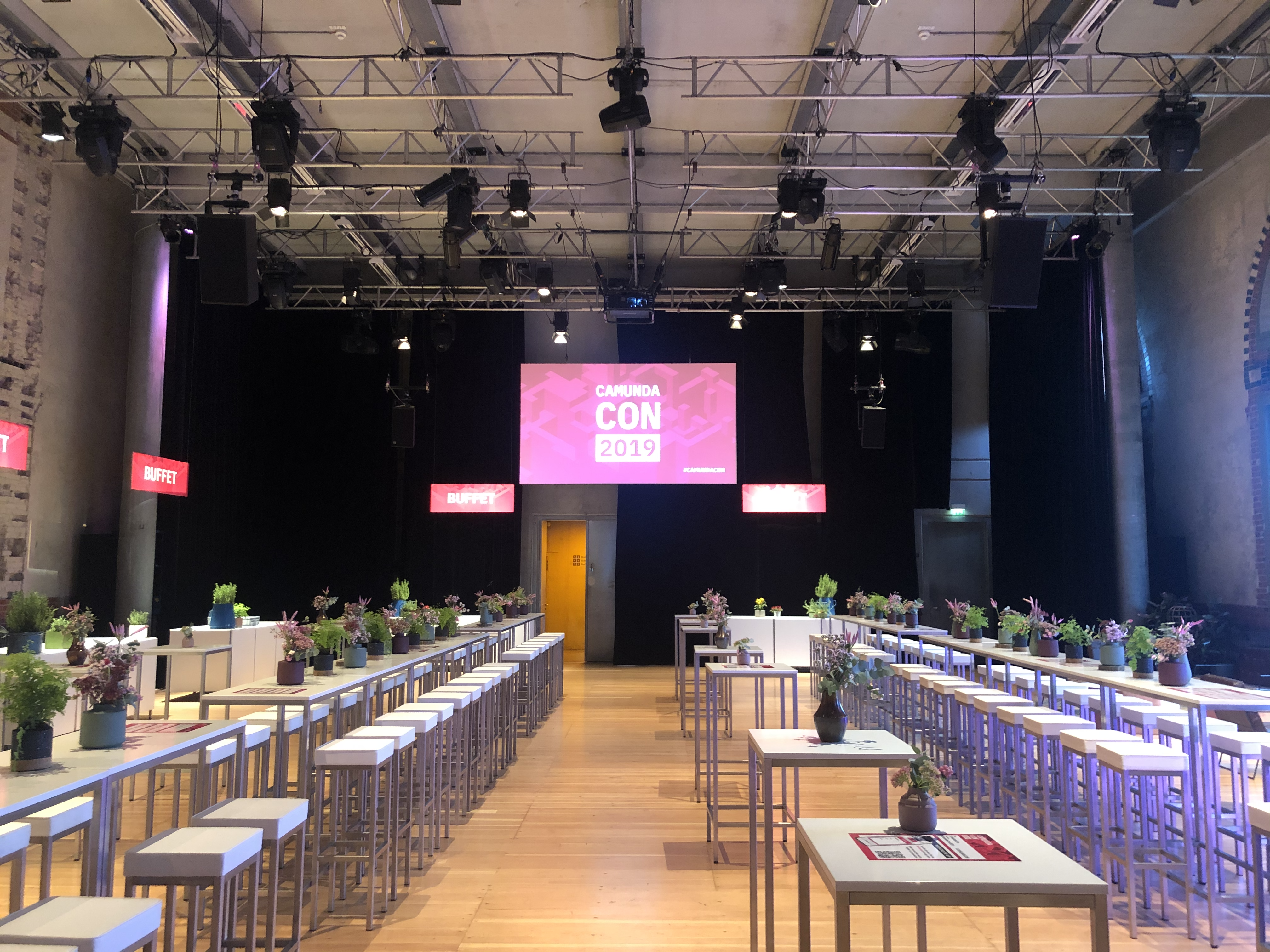

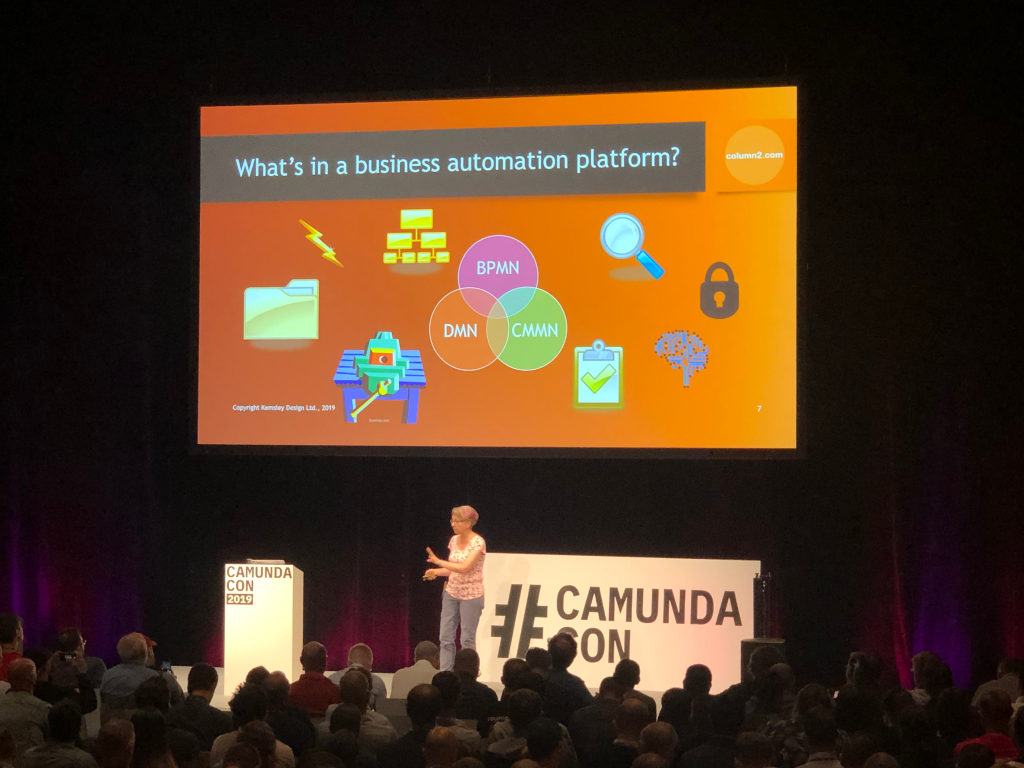
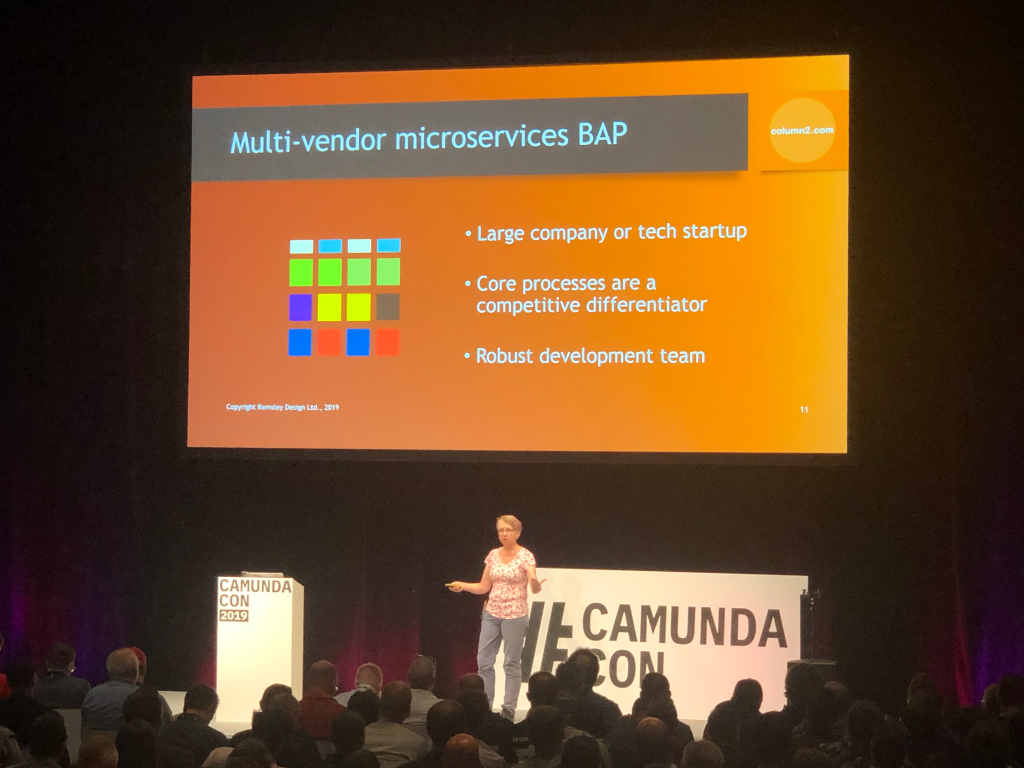
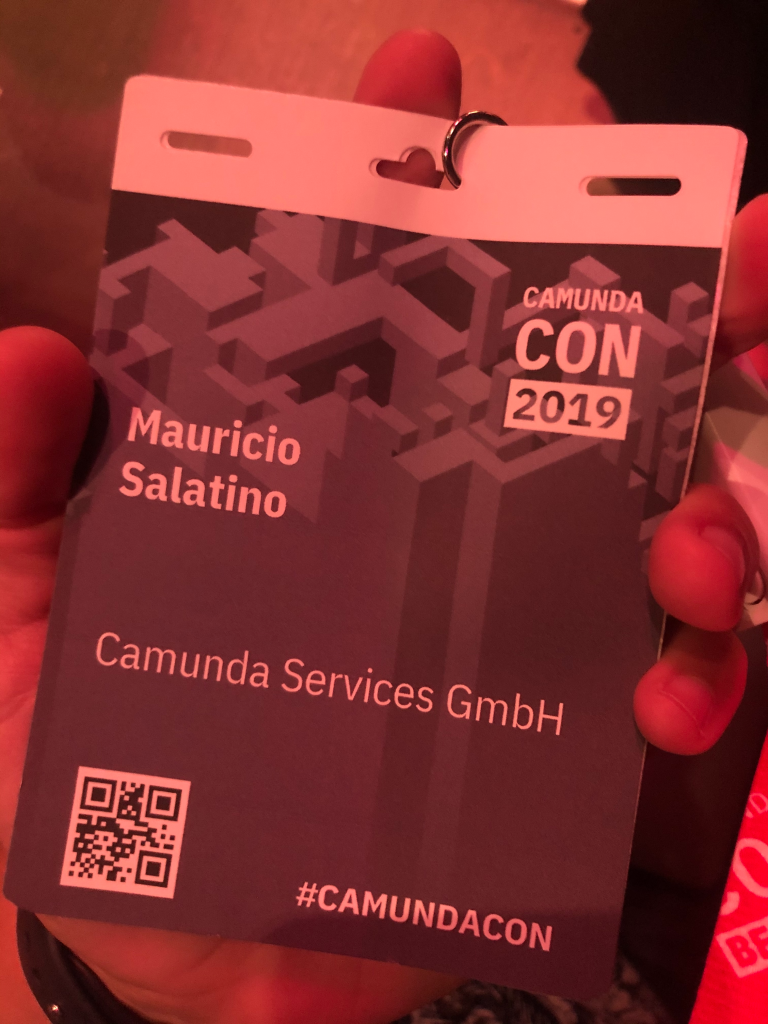

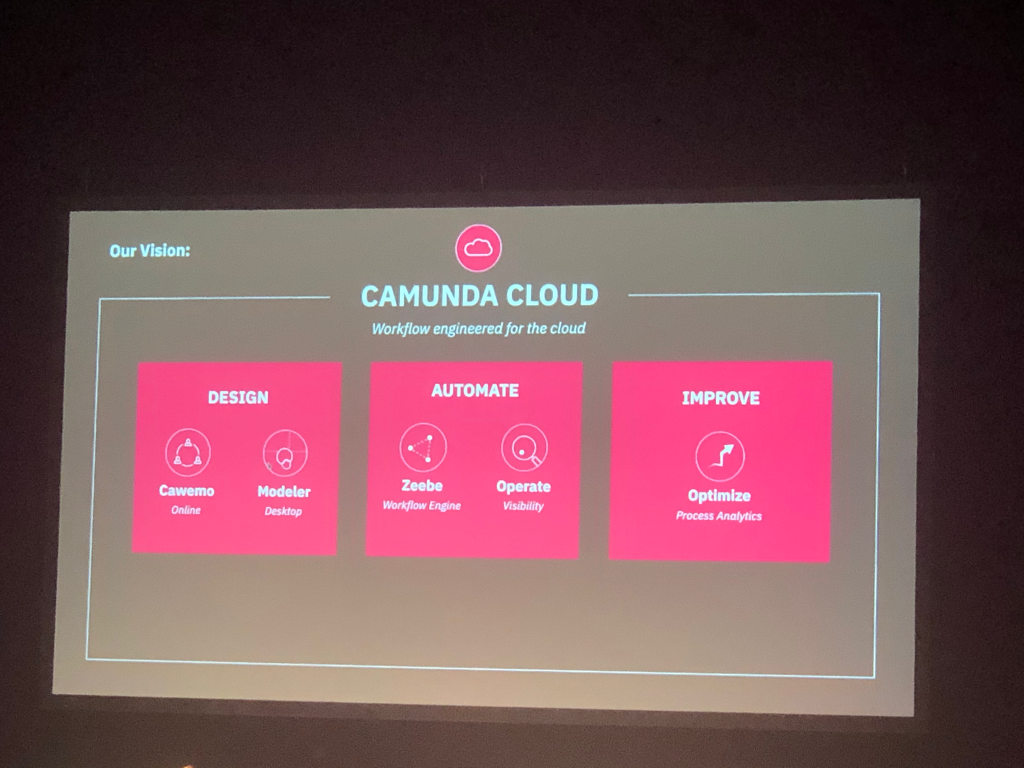

Notes:
- Jacob CEO KeyNote
- Wide range of use cases
- Key Customers
- Large organizations
- Startups
- Public Sector
- A holistic understanding of what is possible
- How to become a digital enterprise
- Customer Focused
- Involve any stakeholders in process automation design
- Provide visibility "broad and deeper" in real-time
- Allow business automation at high-throughput and scale
- Minimize the barrier to operate
- Three main use cases
- Human-based workflow - 1000 instances a month
- Business Automation E2E where the happy path can be automated a high percentage of the time. System to system orchestration 100M transactions per year.
- Super high-frequency technical use cases 80M transactions a day
- Digital Automation Platform as a join solution for all these use cases
- Sandy Kemsley
- Business Automation Platform
- Businesses need agility (to innovate) - long term
- Business needs scalability (to survive) - short term
- A complete platform should have
- Processes
- Rules/Decisions
- Case Management
- Events
- Security
- Search
- Content
- Organizational mapping
- AI/ML
- Components to create Applications
- Business Automation Platform
- Daniel CTO KeyNote
After the Keynotes we had a workshop on Camunda BPM with Spring Boot that went great. The good thing is that you can follow that workshop at your own pace here: https://github.com/camundacon2019/uber-jar
Later on. Doogal from Babylon Health UK shared his experience of using Camunda for ClinOps (Clinical Operations) and take it from PoC to production in less than 6 months. The presentation was great because it highlights the advantages of using a BPMS to solve real-life problems (human orchestration) and it also showed all the challenges that his team faced while doing that in such an amazing short period of time.
Day 2
- Susanne Kaiser - MicroService Journey
- A great overview of how going to microservices is hard and how do we need to prepare ourselves to integrate/delegate/use instead of build in house solutions for components that are not our core competencies. It was great to see that most of the challenges explained during the presentation are being actively solved and improved in Open Source communities such as the Kubernetes community.
- Bernd Keynote
- The balance between the Chaos and Monolith
- Between orchestration and choreography, process monitoring can help but it is not the final solution
- Cloud First, Cloud is here to stay :)
- The balance between the Chaos and Monolith
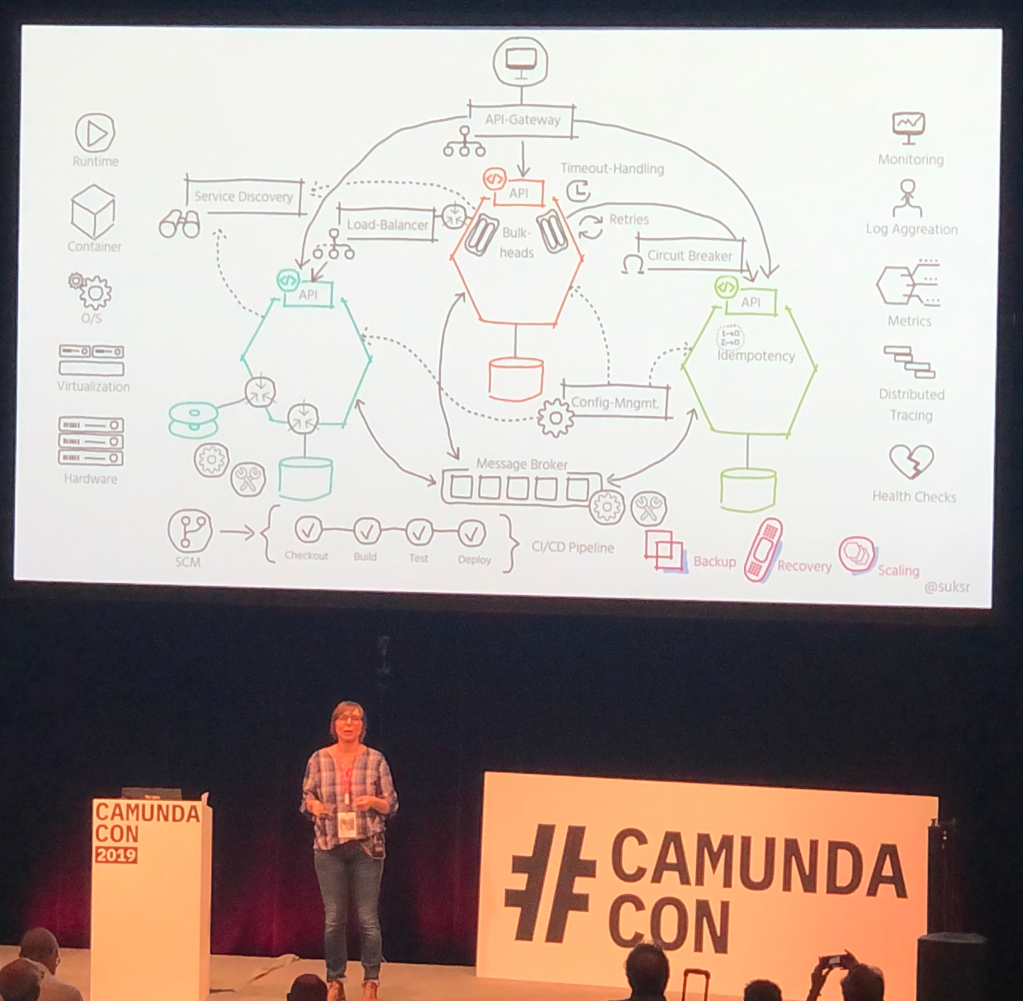
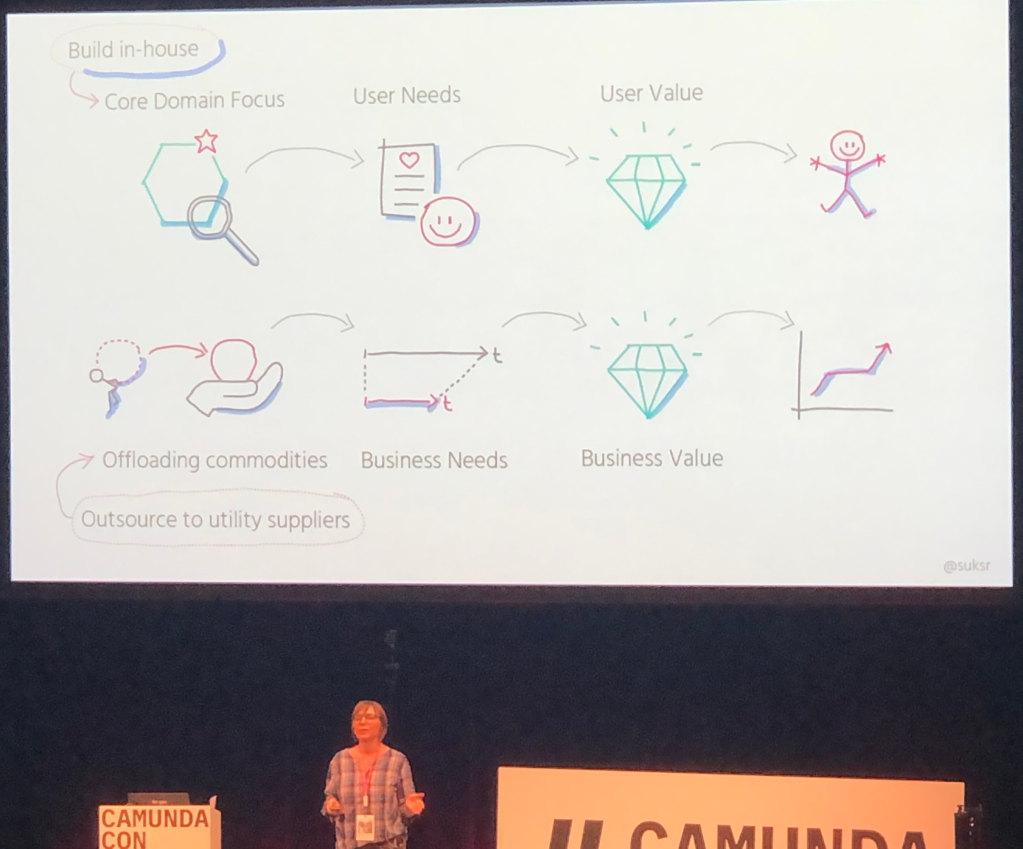
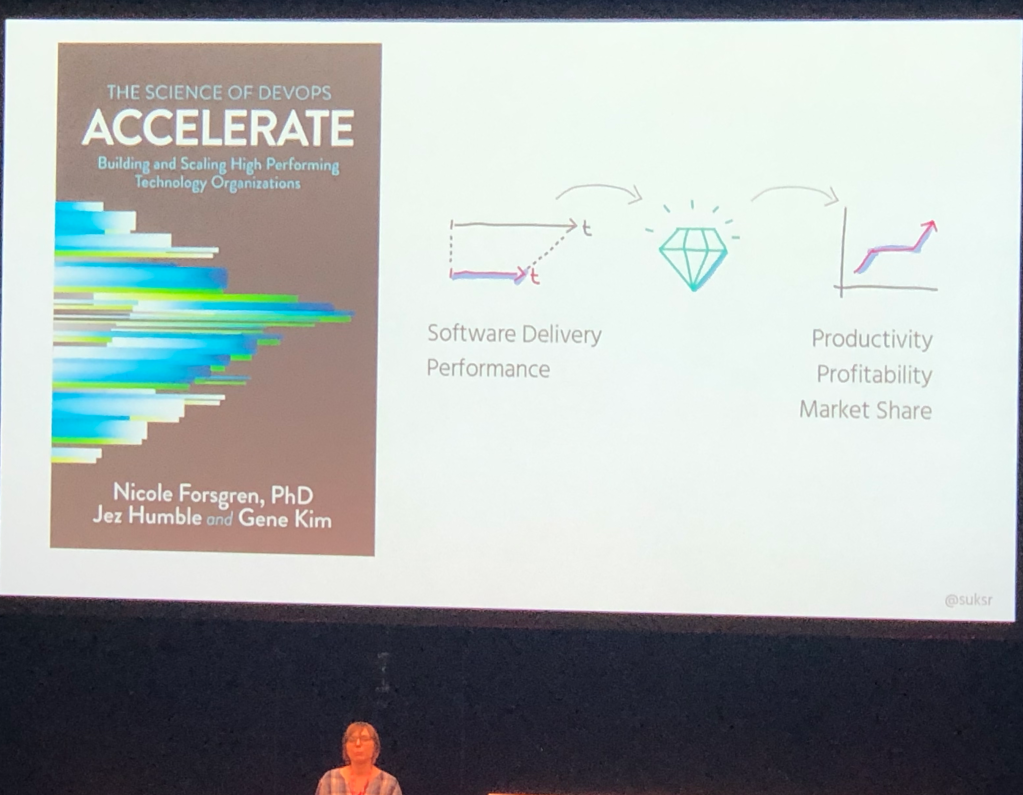
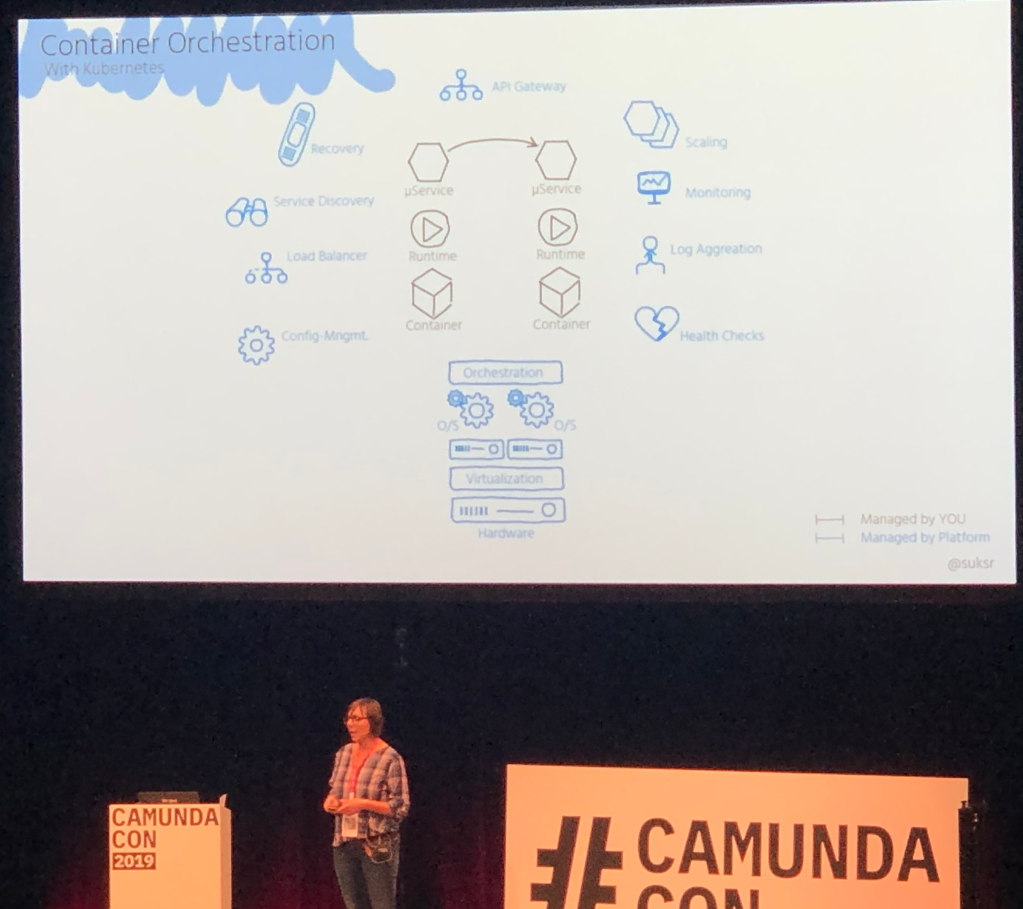
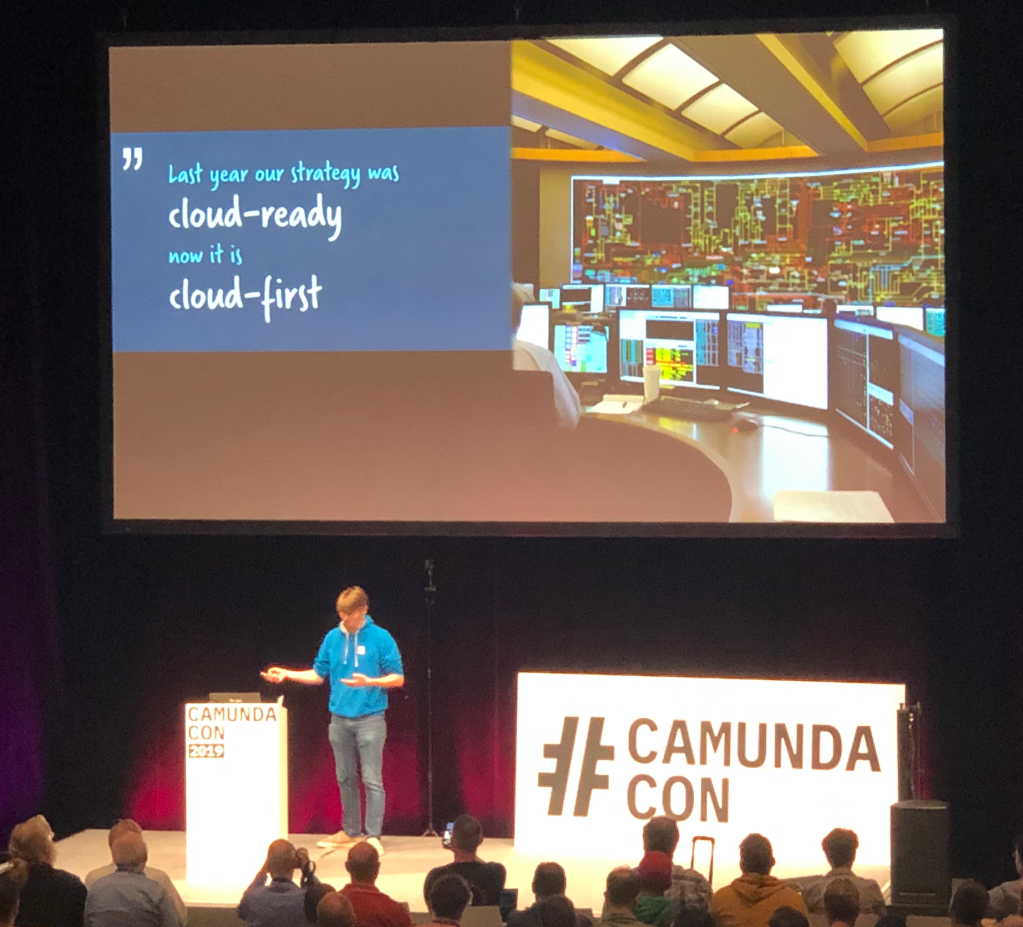
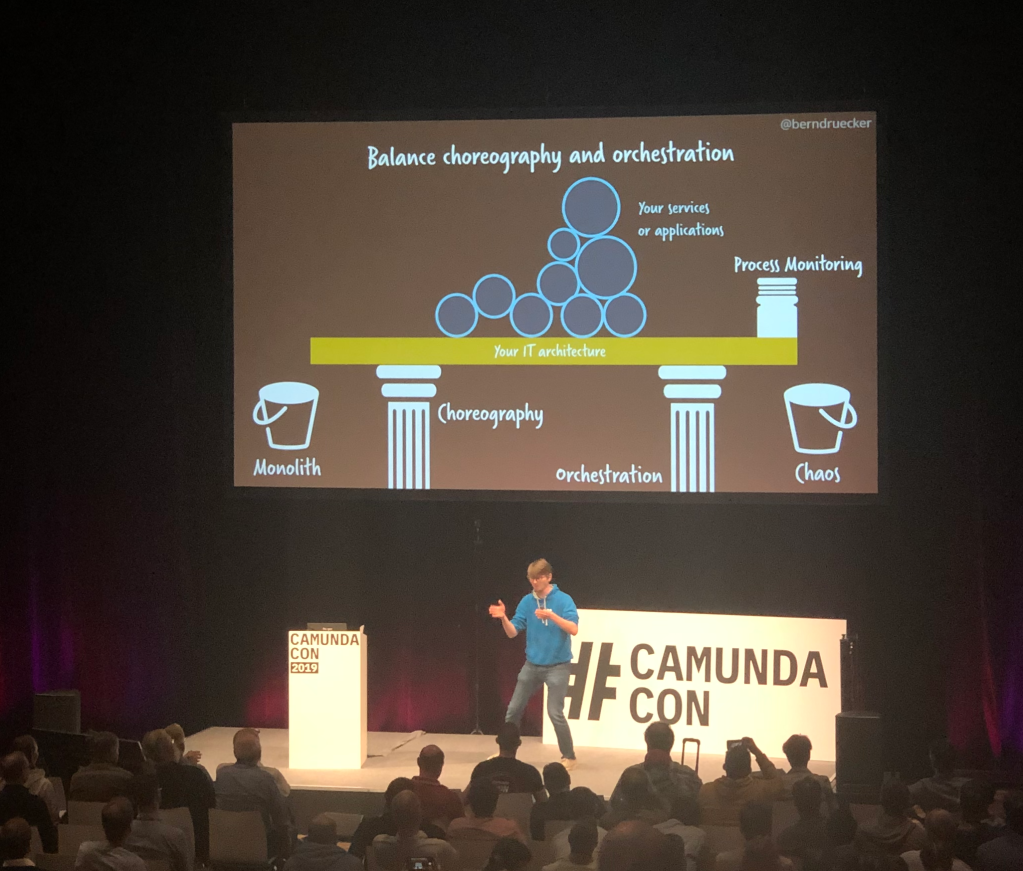
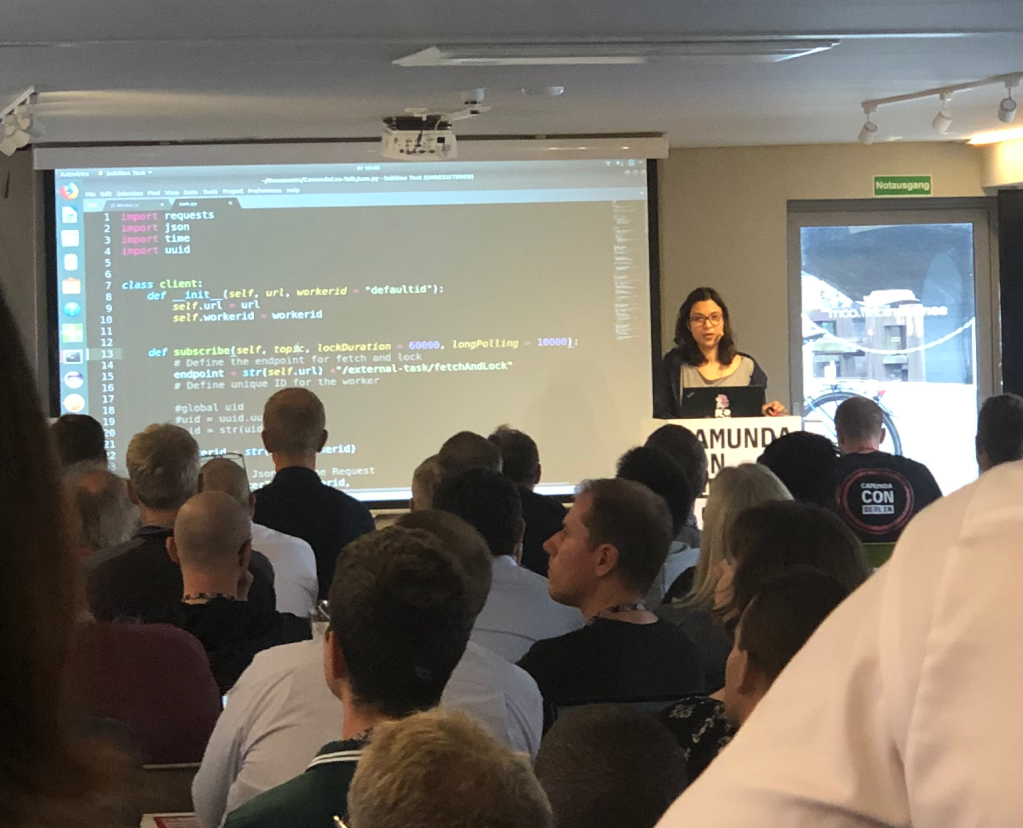
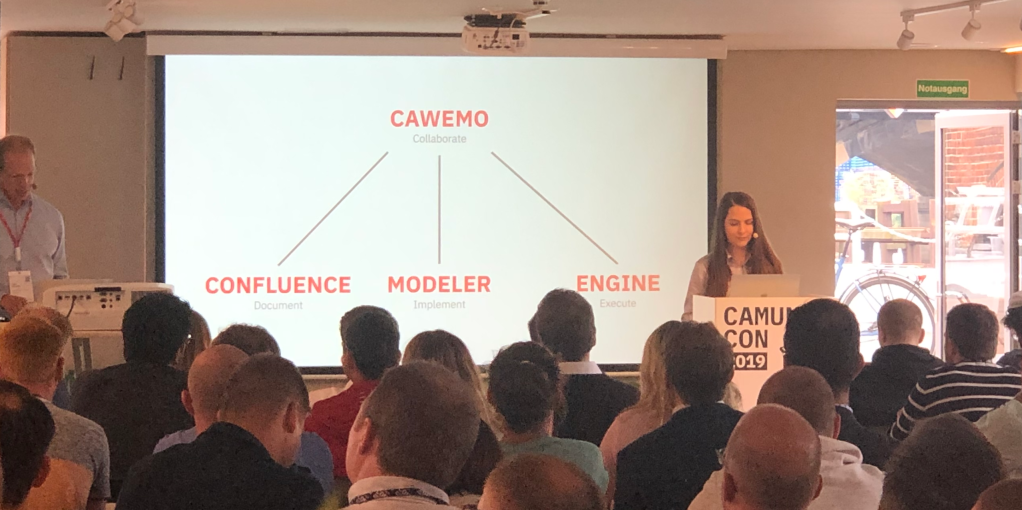
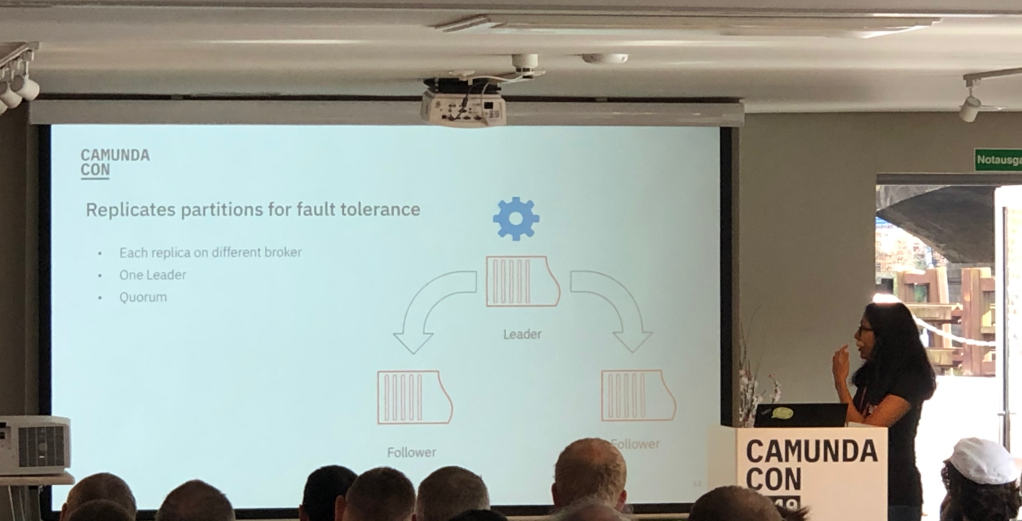
- Tech sessions
- External Tasks in Python .. very practical example by Nele Uhlemann
- Cawemo for collaboration between devs and business analysts
- It is always good to promote collaboration if you haven't tried out yet give it a try here: https://cawemo.com
- Extending BPMN.io and the modeling experience workshop by https://github.com/nikku
- Super important to maintain the ecosystem and customizations of your models
- Check the workshop and do it at your own pace with the guide here: https://github.com/nikku/camunda-modeler-plugins-talk-2019
- Scaling a Distributed Workflow Engine (Zeebe internals, by https://github.com/deepthidevaki )
- Fault-Tolerant and Scalable engine that works based on events streams
- It creates partitions which have one processor each and that are replicated into different brokers, this allows scalability by adding more brokers
- Fault-tolerant is achieved by replicating the data and having a master/slave network that uses consensus to elect Leaders
